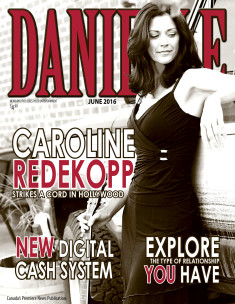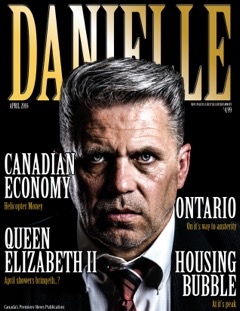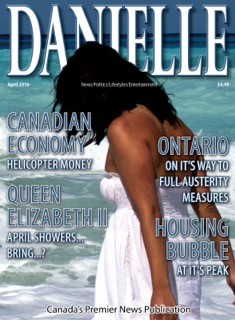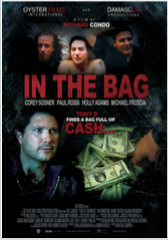Time flies. Stephen Poloz has now begun the sixth year of his seven-year term as Bank of Canada governor. The 62-year-old still has lots of road in front of him, but he’s now crossing into legacy territory, where assessments of his policy decisions will be mixed with debate about his accomplishments and mistakes.
That’s certainly fair: someone who started dreaming about running the Bank of Canada when he still was in university surely wants to leave a mark. And his immediate predecessors, Mark Carney and David Dodge, made names for themselves despite leading what is, after all, a second-tier central bank.
Poloz started quietly, but he is starting to do the same. The housing doomsters will never forgive him for inflating asset-price bubbles — even if those bubbles never burst. But if he retired tomorrow, he would be lauded for cutting interest rates in 2015 before most realized the oil-price collapse would cause as much damage as it eventually did.
His early interest in trying to figure out a way to model uncertainty has gone from arcane to urgent following the election of U.S. President Donald Trump. His time at Export Development Canada makes him unique among central bankers in that he has an intimate knowledge of the global trading system that Trump appears ready to wreck.
Just as Carney, a former investment banker, was perfectly suited for the financial crisis, Poloz was made for a moment that will require seeing the world through the eyes of exporters.
But Poloz’s defining achievement could turn out to be how he played chicken with inflation — and won. As warning signs flashed red, the Bank of Canada bet that the traditional indicators were sending false signals. Policy-makers left interest rates low, creating the conditions for an historic run of hiring.
Something still could go terribly wrong, but Poloz’s record so far is the kind upon which legacies are built.
On July 11, just after Poloz announced the fourth interest rate hike in a little more than a year, the Financial Post sat down with him for an interview in the Towers boardroom at the central bank’s headquarters in Ottawa, as portraits of Carney, Dodge and the six other former Bank of Canada governors looked on.
FP: At the G7 meeting in Whistler, you led a session on uncertainty, something you guys (at the Bank of Canada) have been talking about for months. Can you talk about the nature of that discussion? Why should we care?
Poloz: We’ve begun to build a bit of literature on it here at the bank. The biggest advance was the paper by Mendez and Murchison and Wilkins, which really tries to replay history and look at episodes and ask, “What kind of model could actually explain what actually occurred?” It was uncertainty that was driving the decisions. What that research shows is that uncertainty skews decisions, so it plays a role in the outcome in ways that are not predicted in standard types of models.
The finance ministers were doing this thing on development, and we had a free morning, so instead of playing golf, the central bankers got together for breakfast and spoke about this. Of course, at the time, I would say a source of uncertainty was the one we’re talking about today — trade and all that — but it doesn’t matter much what it is. If you have these tail risks, or maybe that puts it too extreme, but big, weighty things that you think are fairly low probability, how do you actually get them into your decision-making and appropriately reflect them?
You might argue we have this huge possibility of auto tariffs and stuff like that, so you should just wait and see (and leave policy unchanged). Well, no, because there are lots of things I could tell you that are big and nice, as opposed to hairy, that we’re also not allowing to influence our decisions. For example, NAFTA gets restored. Boom. Aluminum and steel tariffs just go away. We should put a higher weight on that possibility than on auto tariffs, frankly. But, you know, they’re both big and they’re harder to quantify.
FP: You said you’d put higher weight on a NAFTA resolution than on auto tariffs. Do you want to elaborate on what you mean? I assume you don’t want me to read too much into that.
Poloz: Yeah, I don’t want you to read too much into that. I’m not actually going to assign weights. But … I don’t remember the last time I read anything about the prospect for NAFTA renewal. It’s all about the other. I thought it was appropriate today to remind people that we should at least be putting a weight on the possibility that it all gets worked out between friends in a way that is beneficial to everybody. There’s no reason why it can’t. Politics makes everything a bit more special. It’s not the same if, say, the central bankers all got together and hashed it out.
FP: How does your thinking about uncertainty apply to the day-to-day, the last decision, for example, to make this more real for people?
Poloz: Let’s set aside trade and all those big hairy things. Just imagine where we’ve been for, say, the last four or five years: pretty widespread underperformance of inflation, right? And (there’s) this continued concern that maybe we should even have higher inflation targets to have better ammo for the future. That’s kind of a prevailing theme.
With two-sided risk, which we always face … we could be right or wrong in this direction or in that direction. But if we’re wrong in that direction, the risk is that with inflation starting at, say, one per cent, we actually have a deflationary outcome, which we all know from our student days has a lot of things associated with it that are much more difficult for an economy to extract itself from.
What that means then is that you weight the downside risk more highly than the upside risk. And it gives you an extra degree of patience in this normalization thing, even though your model — and your Taylor Rule in the model — is telling you, “Oh, look, the economy’s approaching (its speed limit) and you’ve got to get interest rates up to neutral.”
The U.S., which was ahead of everybody, went far slower than any Taylor Rule would have suggested. And again, setting aside the fiscal shock (of Trump’s tax cuts), which is probably one step too many for an economy that was already there, consider the last two years and how much extra movement and the GDP per person that happened because (the U.S. Federal Reserve) did not pre-empt (the rebound) by operating according to a mechanical rule.
This to me is the perfect counter to those who think, “Oh, central banks should obey rules because it’s more predictable.” What is more predictable is that they’re targeting inflation and inflation was underperforming, and that gave them licence to take their time.
I would say that’s been the same thing for us. We’re behind. We’re behind what a Taylor Rule would say (about when the Bank of Canada should raise interest rates). We’re also behind the United States, with good reason, because the oil shock delayed us for two to three years. It gives you that sense of, “Well, yes, we know that interest rates are too low given everything else we know. And yet it’s possible that we’ll get (something) just like the U.S. expansion in labour supply, and additional investment to go with it.”
The NAFTA uncertainly has put a bit of a wedge in that story and made it a little less obvious that it’s happening, but we have upgraded potential quite a bit the last two forecasts … what we call endogenous potential growth. There’s not much extra labour-force participation yet, but the latest (Labour Force Survey) gave us a positive sign. In other words, we want to wait and see with certainty that the economy is into the zone where we have to rebalance the risks, positive and negative, exactly as normal.
FP: In January 2015, you cut interest rates in the face of the oil-price shock even though the economic backdrop looked pretty good. Today, the backdrop looks good. But, facing what could be a tough shock if worst-case scenarios come to pass, you raised rates. What’s the difference between now and 2015?
Poloz: It’s all about what we know versus what we don’t know. Back in the lead-up to Christmas 2014 and early 2015, oil prices were literally collapsing. They got down to 20-something (dollars per barrel). There was an active debate on Bay Street about how that could be positive or negative for the economy: positive because cheaper oil and gasoline (could create) more consumer spending power; negative because we have this huge contributor to the economy, which is the oil sector.
To us, that wasn’t even a contest. We had a very good read from the companies themselves, not just that they would cut investment, but by how much. It ended up being 60 per cent. They told us 50 per cent in our January conversations, December, actually, December-January conversations. We knew the size of shock we were dealing with and how negative it would be.
And inflation expectations were extraordinarily well anchored, had demonstrated all that in the post-crisis period, and, of course, inflation was kind of low besides. We knew the exchange rate would move and that would cause inflation to go up. It all turned out.
Fast-forward to today, it’s quite a bit different. The real economic consequences are quite ambiguous. You’ve got trade battles on various fronts creating unintended consequences. The trade diversion effects that can happen could cut either way. And so that’s ambiguous.
We want to wait and see with certainty that the economy is into the zone where we have to rebalance the risks, positive and negative, exactly as normal
Stephen Poloz
If they do cut negatively, which would be my prior (assumption), what happens then is the economy goes into a period where we’re actually exiting businesses that used to be big based on trade. They go smaller and supposedly something else gets bigger because of the countermeasures.
The short version would be instead of buying steel from the U.S., we buy it from (ourselves). But what if we don’t make that kind of steel? We have to develop that, how long does that take? In the meantime, we’re no longer selling steel to the U.S. And so we get layoffs. Investment falls to zero, just like in the oil shock.
Monetary policy is completely ineffective at counteracting those big effects. What it can do, if there are government policies of some kind, is play a complementary or a bit of a supporting role: inflation is rising, but people understand it’s temporary, so we can cut rates a little bit, maybe, just to buffer it; or hold firm and stop our (plan to raise interest rates gradually) to give the economy more breathing space while it adjusts.
Those are the kinds of things you can contemplate, but it’s around the margin and, again, you honestly don’t know. I can just as easily concoct a scenario where it’s much more appropriate for us to raise rates in that setting, because if you have a sizable depreciation (of the exchange rate) and a big pop in inflation, we’re in the four-per-cent zone (for inflation), and I’m saying (to the public), “Don’t worry, it’s only going to be 18 months or two years and it’ll be back to two per cent.” People would be like, “Really? No, I want a four-per-cent wage increase on it this year because it’s right there in front of me.”
The risk of de-anchoring your expectations is much higher. That’s where the first priorities take over. That’s the one thing that we cannot allow to happen. That’s the one thing that we want to make sure people can count on us to do. If we have the opportunity to do some other things within that scope because our credibility gives us coin, then, okay. Like with the oil shock, we had good credibility. We had some coin, we used some coin. People understood it and the next thing you know, we were right and inflation was right back where it belonged.
Here, it would be much more ambiguous.
FP: Is the situation with lumber helpful in assessing what might happen with other industries?
Poloz: For lumber, the interesting thing is that no one has needed any of the benefits that the government put in place because everything’s going so well. And the only result out of all that is the U.S. consumer is paying more. That’s the only thing (the tariffs) did. How is that protecting or helping anybody?
FP: Is it possible to extrapolate from the lumber experience and suggest that because U.S. demand is so strong, exports of aluminum, steel and what have you will find their way to market and the impact of the tariffs might be less than we fear it could be?
Poloz: It’s a tough call to make. All of (the Bank of Canada’s) tools are ceteris paribus tools, so they don’t distinguish very well between those things. But in a risk-based assessment of it, you could begin with, “Well, gosh, from a macro standpoint (aluminum and steel are) pretty small. The market’s pretty hot. There is all this infrastructure spending and all kinds of demand for steel. The car market is hot.” Yeah, it could end up looking a bit like (lumber).
Plus, the federal government’s counter measures include this way of claiming rebates if you’re bringing in U.S. steel to make something, and then you are re-exporting the thing, so you have the ability to go and say, “Well, I shouldn’t have to pay.” And that’s true. That can take the sting out in a cross-border setting.
In general, it could be that we’re putting too much energy into it. But at the same time, if we’re not going to spend energy on it, just because this is small, or that’s not going to have much effect, what good are we? There are principles involved. There’s a sense of, “If that doesn’t work, (the Trump administration) will try something else.” We need to resolve this in a more fundamental way, go to what is the true thing that is trying to be achieved, and suggest other ways to go about it, rather than distorting everything else in sight.
FP: You’ve struggled as an institution to get your forecasts right. Where are you at in your assessment of what’s going on with exports? How confident are you in the latest export forecasts?
Poloz: We have some new research that supports the new projection. We said in April that we would work hard on it in the intervening period and we did. The idea is to try to understand the forecast error. What are the things that could cause that? And we’ve said, “It’s falling into a residual,” which means it’s not any of the normal things you put in your models. We call that “competitiveness challenges.”
They’re not new, they go back like 10 or 15 years. They’re old. The things that make that list are: the gradual increase in red tape or process, or even simple things like expanding your plant in Vaughan or Mississauga. It’s not as simple as it sounds … it’s amazing how much time all this takes.
People will tolerate some things for a good reason, plus they’ve got fixed costs sunk in the ground. But then (electricity) is twice as much as what they are paying in their plant in Michigan. And, “Oh, by the way, the excess electricity from Ontario is being dumped, you know? Why can’t I have that? Dumping it for almost nothing.” That’s often mentioned.
And access to labour. People are all mentioning to us now they’ve got 12 jobs, or 20 jobs, and they just can’t find people. I’ve been saying, “You know, it’s gonna take 10 or 20 years for the education system to somehow remake itself and suddenly turn out people that are turnkey for you.” That’s not gonna work. You’ve got to go a little bit German here and say, “Give me some smart people and I’ll teach them what they need to do.” In Germany, they take a much bigger share of the responsibility at the company level and we know well that it succeeds well.
Anyway, what our work shows is that we have lost (capacity to make things). It is not some temporary error in our model. In the past, you think, “Well, look, in the past year exports have grown less than we thought. It could be because of this, that or the other thing. So over the next couple of years we’re going to get at least some of that back.” That is your first way of thinking. And this was true back in 2013. It’s been true all along.
I came along and said, “Well, which companies are going to give you all that?” It turns out, they’re all gone. So we knocked (the outlook) down. That was our first big revision in the fall of 2013.
What our work shows is that we have lost (capacity to make things)
Stephen Poloz
It’s almost the same now. Those competitiveness issues that we now think we understand, well, they’re not going away tomorrow. It means those shocks won’t reverse, so we reset at that lower level.
And then we say, “Well, surely from there, if none of those things change, we at least have a chance that this will grow roughly at the same pace as foreign demand.” That’s a very conservative kind of assumption, because our models would normally say, “It’s going to skyrocket.” Of course, we’ve got other monkeys in murk now, so (exports) could be affected again, very tough to model.
Exports have actually recovered a lot, they just haven’t grown beyond (previous levels). We’re seeing lots of examples of new emerging sectors and companies, which is actually where the true excitement is. That’s where the productivity will come from. IT services (is) the fastest-growing employment generator, the fastest-growing export category right now. And there are the stresses of finding the right people, because if you can add 10 more people, you can take on more clients. It’s very exciting.
FP: To what extent has the Canadian economy changed structurally? For example, are exports the driver of the economy like they used to be?
Poloz: We will forever be a trade-dependent economy. It’s possible that we will be less driven by fabrication than we were in the past just in terms of the basic numbers. But fabrication can happen anywhere and increasingly is automated. What we want to make sure we are a part of is the design, the engineering, the marketing, the thinking of new products.
Those competitiveness issues that we now think we understand, well, they’re not going away tomorrow
Stephen Poloz
People forget, even in a car, only five or six per cent of the value of that car is created at the assembly point. An assembly plant, we get all excited, but where are the pieces coming from? Because the pieces are most of the value, like 95 per cent of the value, which is why the Magnas and the Linamars and so on have been so successful.
You get a new doodad on your car that does something that your buddy’s car doesn’t because you got the latest model. Well, it was a parts company that thought that up, not the assembly company. Isn’t it ironic that much of the value in cars is in that end of things, a lot of it is U.S. value and it’s not recognized in this conversation we’re having about autos.
FP: Last question. Some of your counterparts around the world really seem to be struggling to get wages up. That’s creating worry they won’t be able to meet their inflation targets. One, how concerned are you about wages? And, two, if Canada is an exception, what does that mean for policy-making here?
Poloz: I’ll go with the last part first. What it may mean is the so-called neutral rate, or the natural rate of interest, is lower than we think. We may not know until it’s actually true. Based on our methodologies, we think we’ve got that figured out, but there’s a question around it. I’ll openly admit that. Of course, that would mean that our target would probably be different.
Our understanding of (Canada’s neutral rate, which is estimated to be between 2.5 per cent and 3.5 per cent) is very heavy influenced by the global rate, and so it’s not made in Canada, not entirely, it’s partly made in Canada. For sure, your reasoning is correct and (lower global interest rates) would come full circle and it would affect the destination (of Canadian rates.) In a sense, it’s like saying, “You’re stimulating the economy less than you think because the neutral rate is lower than you think, so you have less stimulus to take out.” That’s an open question.
Getting back to where are the wages (and) inflation … here’s the key: I think we’ll discover someday that everybody is enjoying a positive supply shock at this time. The digitalization, the automation, all the things we point to as potentially keeping prices from going up as much as usual, all have a mirror image, which is that we’re more productive and more efficient and better than before.
It is a little bit like the (Alan) Greenspan era when he said, “Oh, I feel that I can keep interest rates lower” and all this, and he was right. In the end, we understood later, there was a positive supply phenomenon. We’ve identified that all along. That’s built into our thinking. It is built into our model, a conservative view of it, so that’s why we keep mentioning that at this point in the cycle it’s much more likely that we will be positively surprised by potential because we’re taking a very conservative view on it.
The U.S. is a good illustration because, as I said, the models would have told them to raise rates a lot faster than they have and they’ve gotten a remarkable labour market and output performance with low inflation as a result. In the end, the academics will say, “You know what, that was a supply shock and it wasn’t just the U.S. It was digitalization.” Arguably, globalization is part of that. That’s what I did in the Storer lecture (at Western Washington University in September 2016).
Of course, we run the risk of backtracking on it. It could be a negative supply shock. If we do all the tariff wars and stick with them, we will create our own negative supply shock and that will be inflationary. The central banks will have to work hard, because it will be like in the seventies, the last really big negative supply shock that we had. And that would be regrettable.
The Q&A above has been edited and condensed.
• Email: [email protected] | Twitter:

















